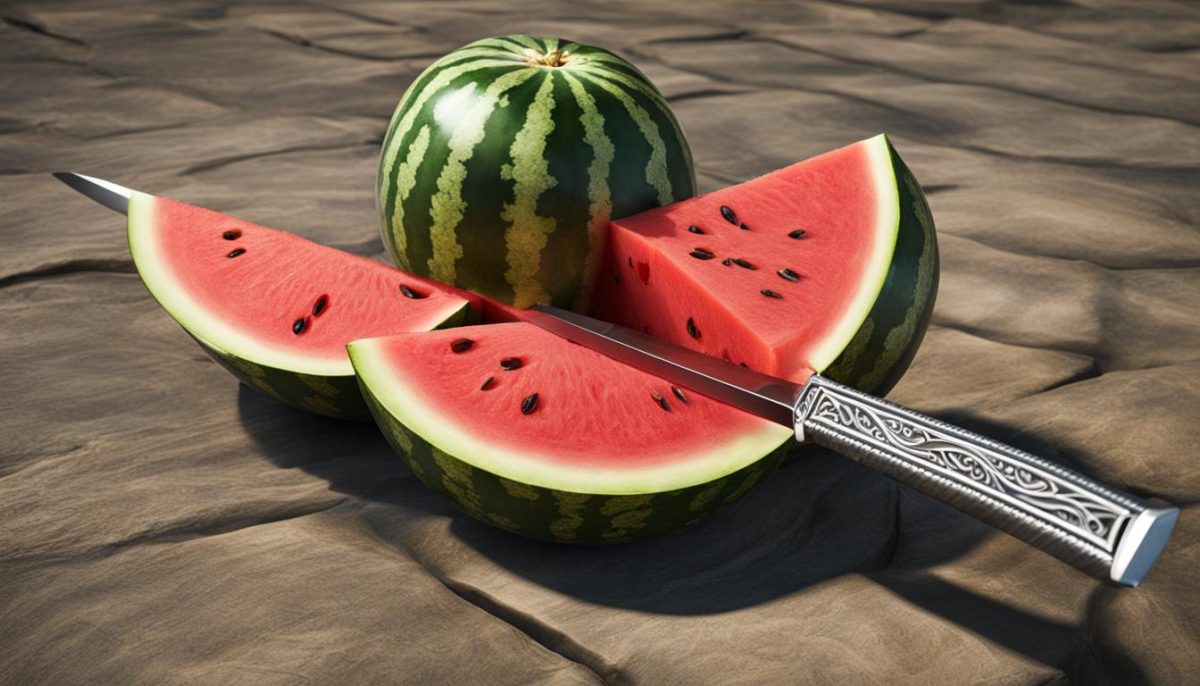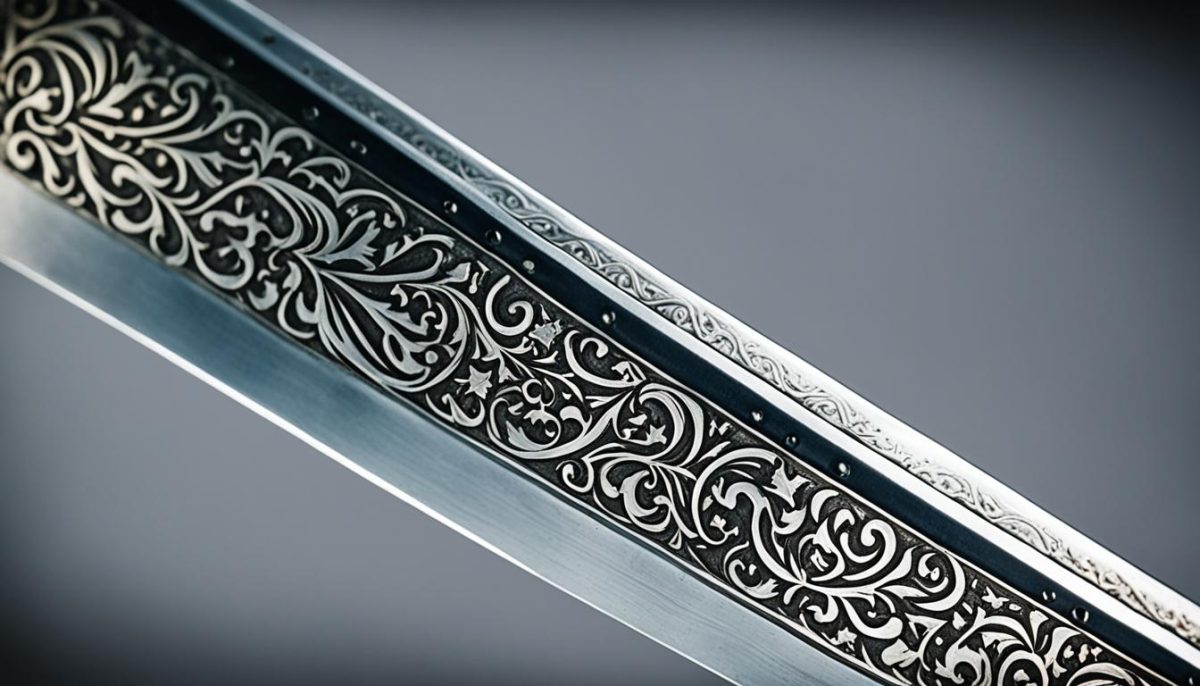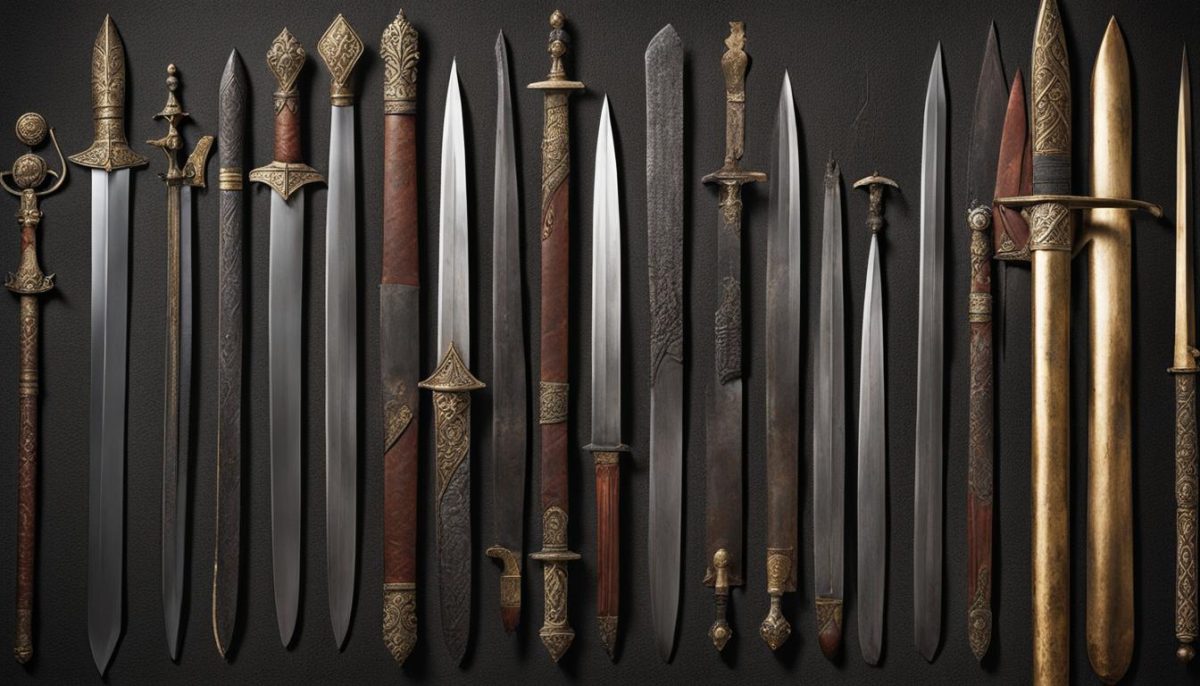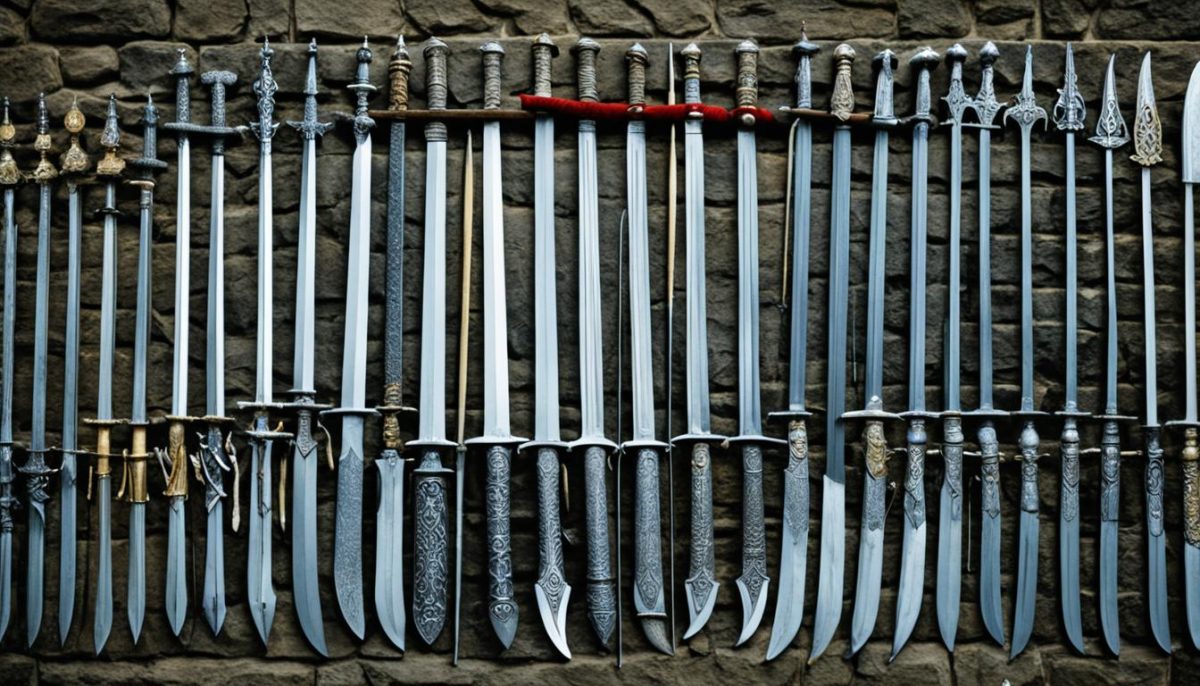The allure of medieval weaponry often conjures images of valiant knights and fierce battles, with swords that slice through air and armor with almost mythical precision. Yet, how sharp were these historical blades really? Revisiting the past, equipped with cutting edge technology and literary evidence, we unravel the realities of sword sharpness in medieval times. Through the esteemed works of Ewart Oakeshott’s “The Archaeology of Weapons” and Mike Loades’ “Swords and Swordsmen,” coupled with insights from age-old manuscripts such as the “Talhoffer Fechtbuch,” we trace the practical applications that define the true cutting capability of these iconic artifacts.
Curiosity and fascination with the sharpness of historical blades are not merely academic—they tap into a deeper understanding of medieval life and martial prowess. Stay with us as we cut through myths and facts, exploring the testament of time left on these intriguing pieces of history.
Historical Context of Swordsmithing
The legacy of the swordsmith reverbrates through history, marking significant evolutions in technique and metallurgy that have forged blades of legendary status. From the mystical Damascus steel to the revered craft evident in European swordsmanship, the art of blade forging is a tale of innovation, skill, and regional nuances that have sculpted the narrative of combat and chivalry.
The Evolution of Sword Making Techniques
As the profession of swordsmithing ascended from a mere trade to an art form, the history of swordsmithing saw a revolutionary shift in techniques and practices. The trial-and-error of early forges gave rise to refined methods of heat treatment and quenching, elevating the durability and sharpness of the swords produced. This evolution is not just a tale of technological advancement but a reflection of the changing tides in warfare and the demands it placed on blade forging.
Materials Used in Medieval Sword Construction
The remarkable characteristics of Damascus steel remain a pinnacle achievement in the swordsmith’s craft. Its intricate patterns and reputed strength represent a confluence of metallurgy and aesthetic beauty. However, this was not the only material employed in the pursuit of the perfect blade; throughout Europe, a variety of metals were utilized, each contributing its unique properties to the overall effectiveness and sharpness of a sword.
Geographical Variations in Sword Sharpness
Diverse combat styles necessitated distinct blade features across various regions. The Japanese katana, with its razor-sharp edge and unique forging process, stands in contrast to the broader and equally formidable European longsword, designed for powerful strikes. These geographical variations embody the strategic and cultural impulses that shaped the technique and materials chosen by swordsmiths of the age.
- The intricate folding process of Damascus steel is a testament to early metallurgical innovation.
- Heat treatment techniques developed over centuries played a pivotal role in edge retention of blades.
- Different regions prized certain characteristics in their swords, be it flexibility, sharpness, or weight, which profoundly influenced local swordsmithing traditions.
Sharp Medieval Swords in Combat and Daily Life
In the tapestry of medieval history, the sword stands out as a paramount tool, serving multiple facets of society. Its effectiveness in battle, a testament to its sharpness, not only symbolized the martial might of the warriors but was, quite literally, the edge that defined life or death scenarios on the battlefield. The evidence laid out in Ewart Oakeshott’s “Records of the Medieval Sword” paints a picture of blades that were as lethal as they were revered.
Fiore dei Liberi’s “Flos Duellatorum” underscores the sword’s role in martial practices beyond open warfare. In duels and feats of arms, a keen edge was crucial and spoke to the swordsman’s honor and preparedness for personal defense. The detailed combat manuals from this era provide a window into the technical demands of swordplay and the necessity for a well-maintained weapon.

The versatility of swords extended into utility use within everyday life. They were tools for personal security and societal order. Alan Williams, in his work “The Knight and the Blast Furnace”, explores the importance of metallurgical understanding in preserving this efficacy, suggesting that the societal role of swords was intrinsically linked to their physical upkeep.
| Aspect | Utility | Insights from Historical Sources |
|---|---|---|
| Effectiveness in Battle | Offensive and defensive weapon, instrumental in warfare | Ewart Oakeshott’s records illustrate battlefield prowess of swords |
| Personal Defense | Protection tool for nobility and knights, status symbol | Combat manuals detail usage in duels and personal combat scenarios |
| Utility Use | Multipurpose implement in civilian life | Metallurgical texts tie sharpness to sustained utility performance |
| Martial Practices | Essential feature of knightly training and military preparation | Historical martial treatises prescribe standards of sword maintenance |
The sharpness of medieval swords thus played an integral role not merely in warfare but also as a functional asset ingrained in the fabric of daily existence. The culmination of effectiveness in battle, personal defense, and broader utility use was sustained through conscientious care and adept martial practices, ensuring these iconic blades carved their mark not only on flesh and armor but also on the annals of history itself.
Preservation and Examination of Medieval Swords
The meticulous preservation and examination of medieval swords not only connect us to bygone eras but also enrich our understanding of historical warfare and craftsmanship. As we delve into the cutting-edge technology and meticulous techniques employed by today’s experts, we gain valuable insights into the legendary sharpness of these ancient blades. Archaeological findings play a pivotal role in these discoveries, offering tangible links to the past.
Modern Analysis of Medieval Blade Sharpness
The intersection of history and modern science is most evident when it comes to blade sharpness testing. Employing high-resolution tools like scanning electron microscopy (SEM), experts can analyze the microstructures of blade edges. This advanced technology reveals the secrets behind the construction, wear, and maintenance of historical swords, providing an unprecedented understanding of their actual cutting capabilities.
The Role of Conservation in Understanding Sword Sharpness
Sword conservation is an art in itself, requiring a delicate balance between preserving the integrity of a blade and maintaining its historical accuracy. Through the meticulous work of conservators at leading institutions like the Wallace Collection, we decipher the tales that every nick, scratch, and gleam on a medieval sword tells. Such efforts unravel the historical usage of these swords and assist in the meticulous reconstruction of their sharpness over time.
Recreating Medieval Swords for Experimental Archeology
Historical reenactment and experimental archaeology breathe life into ancient metalwork, providing an immersive foray into the craftsmanship of medieval weaponry. By recreating medieval swords, historians and blacksmiths can undertake practical assessments of swordsmanship techniques and battle-readiness that defined the era. Through these reenactments, the art of the sword is revered and relived, allowing us to appreciate the skills and intricacies involved in wielding these remarkable weapons of the past.



